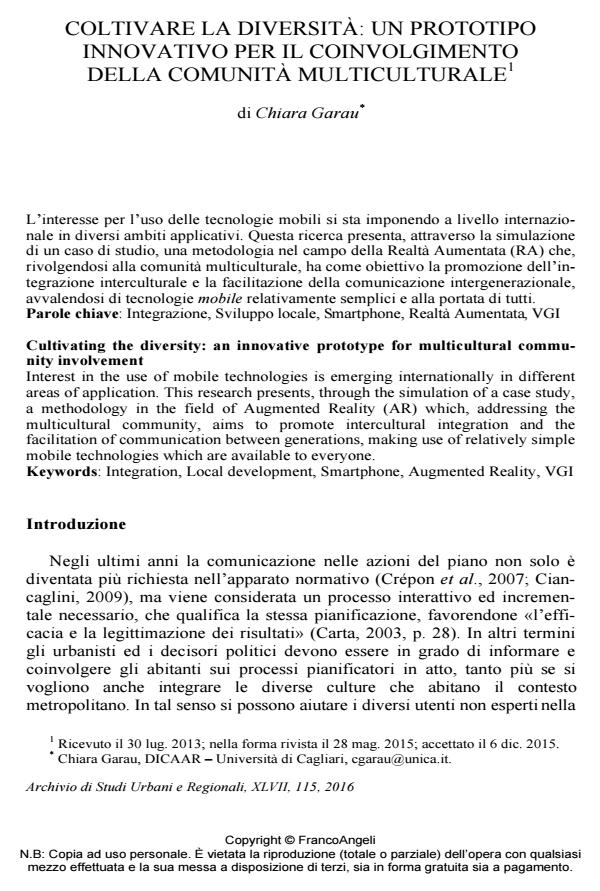Cultivating the diversity: an innovative prototype for multicultural community involvement
Journal title ARCHIVIO DI STUDI URBANI E REGIONALI
Author/s Chiara Garau
Publishing Year 2016 Issue 2016/115
Language Italian Pages 19 P. 75-93 File size 98 KB
DOI 10.3280/ASUR2016-115004
DOI is like a bar code for intellectual property: to have more infomation
click here
Below, you can see the article first page
If you want to buy this article in PDF format, you can do it, following the instructions to buy download credits

FrancoAngeli is member of Publishers International Linking Association, Inc (PILA), a not-for-profit association which run the CrossRef service enabling links to and from online scholarly content.
Interest in the use of mobile technologies is emerging internationally in different areas of application. This research presents, through the simulation of a case study, a methodology in the field of Augmented Reality (AR) which, addressing the multicultural community, aims to promote intercultural integration and the facilitation of communication between generations, making use of relatively simple mobile technologies which are available to everyone.
Keywords: Integration, Local development, Smartphone, Augmented Reality, VGI
Chiara Garau, Coltivare la diversità: un prototipo innovativo per il coinvolgimento della comunità multiculturale in "ARCHIVIO DI STUDI URBANI E REGIONALI" 115/2016, pp 75-93, DOI: 10.3280/ASUR2016-115004